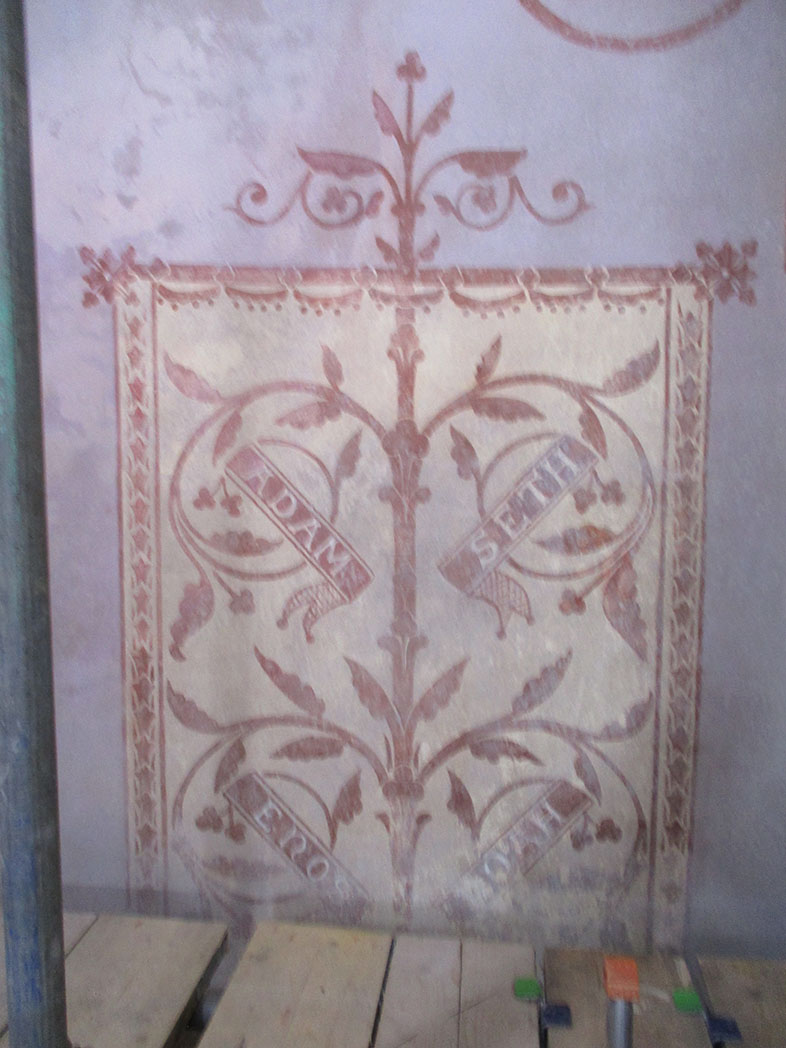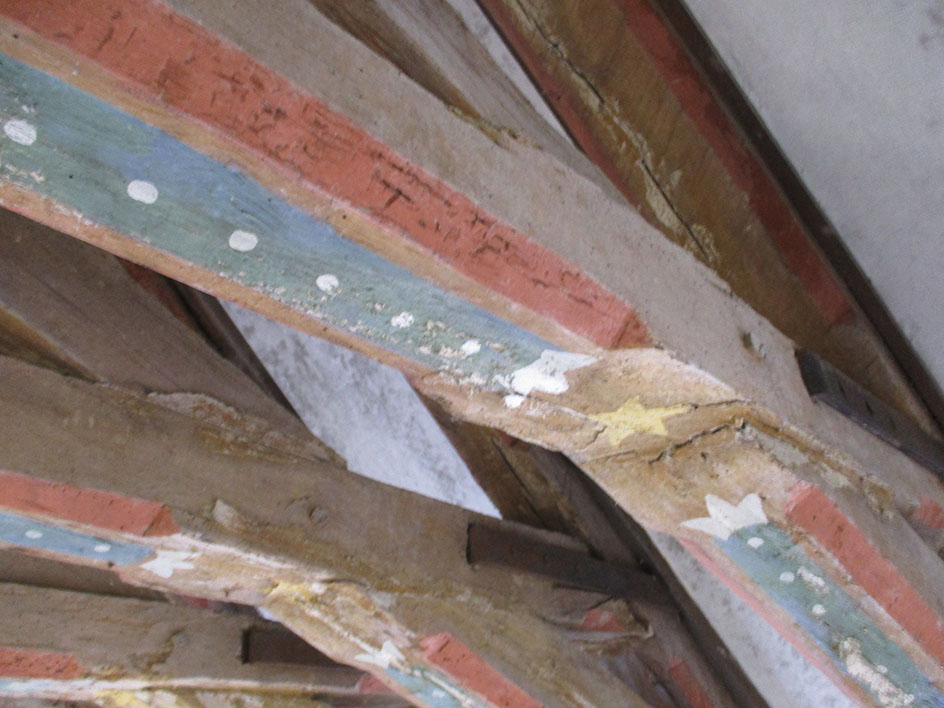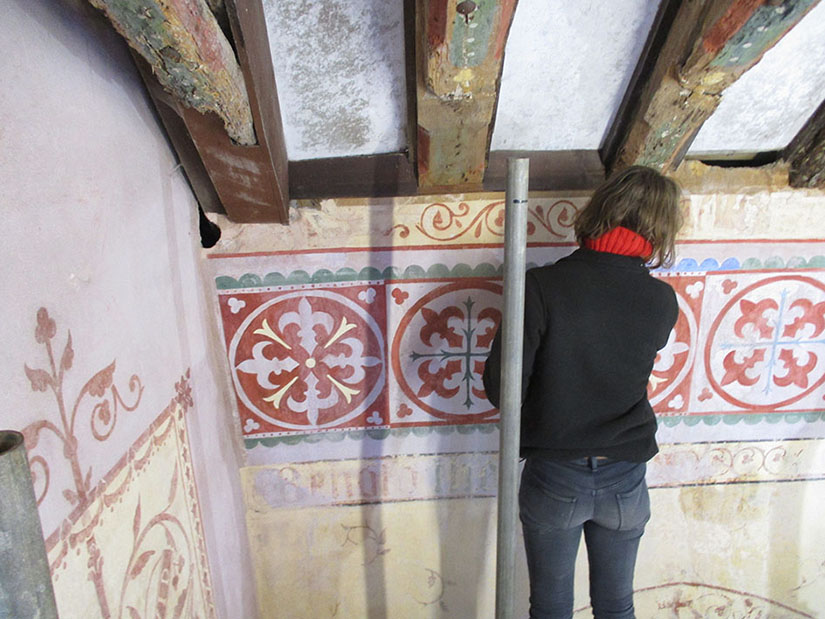Much of the project was carried out during June 2019, when the conservators restored the decorations painted on the north and south walls of the chancel. The treatment revealed the colours as bright and very noticeable.

Seddon's painting on south wall
A survey carried out by Swift Ecology in September 2018 identified three species of bat: brown long-eared (Plecotus auritus), common pipistrelle (Pipistrellus pipistrellus) and lesser horseshoe (Rhinolophus hipposideros), but of these, the brown long-eared bats were the only ones with a roost in the chancel roof, which were liable to be disturbed by the work. Earlier surveys had found no bats present in the Walker organ in the chancel, so there would be no interruption of the work on either the organ or the decorated plaster. However, as space behind the decorated plaster was revealed, it became apparent that the whole chancel roof would need to be restored, with up to 70% of the stone tiles and one of the rafters needing to be replaced.
The murals on the east date from Seddon's work in 1853, while the ones on the north wall are from work carried out in a later period; 1867.

the east wall
On the east wall the painting of the genealogical tree from Adam to Abraham were also restored, but the text around the window arch was hard to decipher! The conservators understand the east wall paintings to be of a later date of around 1867 and that the earlier painted roof timbers were added with golden stars by Seddon.
It was possible to continue working on the chancel walls through the bat 'closed season'because the ecologist was satisfied that it would not disrupt the bats' activities. The first phase was finished by the end of June 2019. This was just the painted decoration, without any of the consolidation needed on the plaster which will be completed after the work on the roof, currently scheduled for summer 2020.
According to the project's Bat Mitigation Licence, which is valid for five years ending 13th December 2023, work on the church is only permitted during two periods in a year: after hibernation, in March and April, and after breeding and maternity, in October and November. Work on the J W Walker organ, which is currently dismantled, can be carried on off-site so that once work on the chancel is finished, the organ can be rebuilt. This was orignially planned to be completed by the end of 2019, which was be the instrument's 150th anniversary, it having been originally built in 1869. First, structural complications discovered during the early phases of the work, and then Covid 19, set back the programme considerably.

Seddon's stars on the beams
On the east wall the painting of the genealogical tree from Adam to Abraham has also been restored but the text around the window arch is hard to decipher! The conservators understand the east wall paintings to be of a later date of around 1867 and that the earlier painted roof timbers were added with golden stars by Seddon.
A survey carried out by Swift Ecology in September 2018 identified three species of bat: brown long-eared (Plecotus auritus), common pipistrelle (Pipistrellus pipistrellus) and lesser horseshoe (Rhinolophus hipposideros), but of these, the brown long-eared bats were the only ones with a roost in the chancel roof, which were liable to be disturbed by the work. Earlier surveys had found no bats present in the Walker organ in the chancel, so there would be no interruption of the work on either the organ or the decorated plaster. However, as space behind the decorated plaster was revealed, it became apparent that the whole chancel roof would need to be restored, with up to 70% of the stone tiles and one of the rafters needing to be replaced.

repainting the north wall